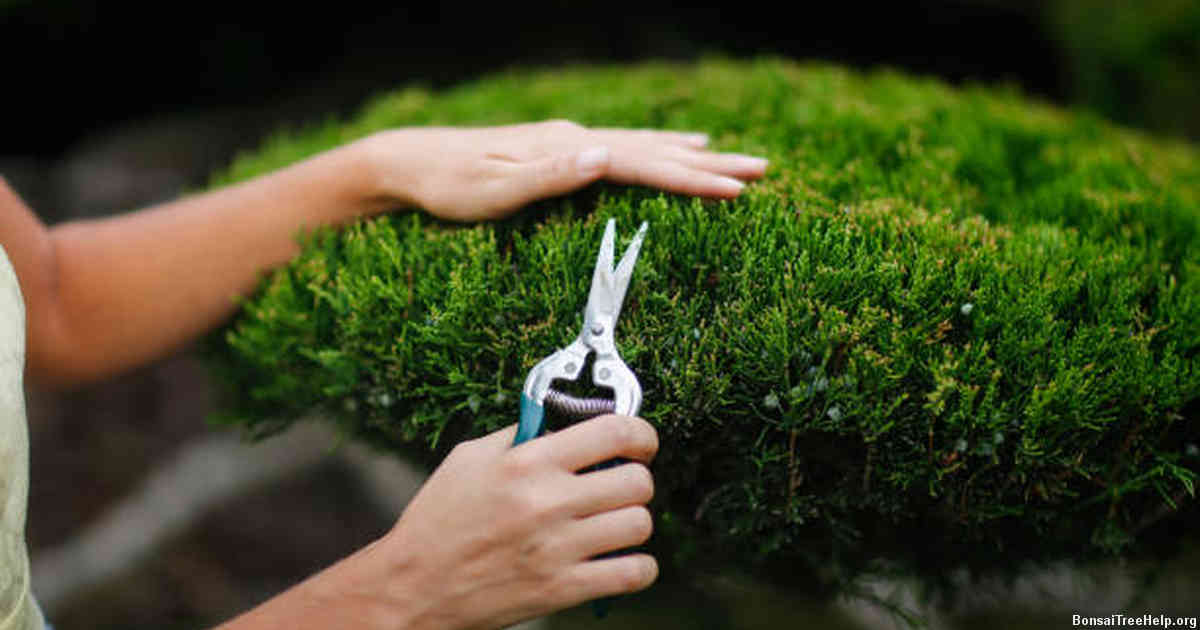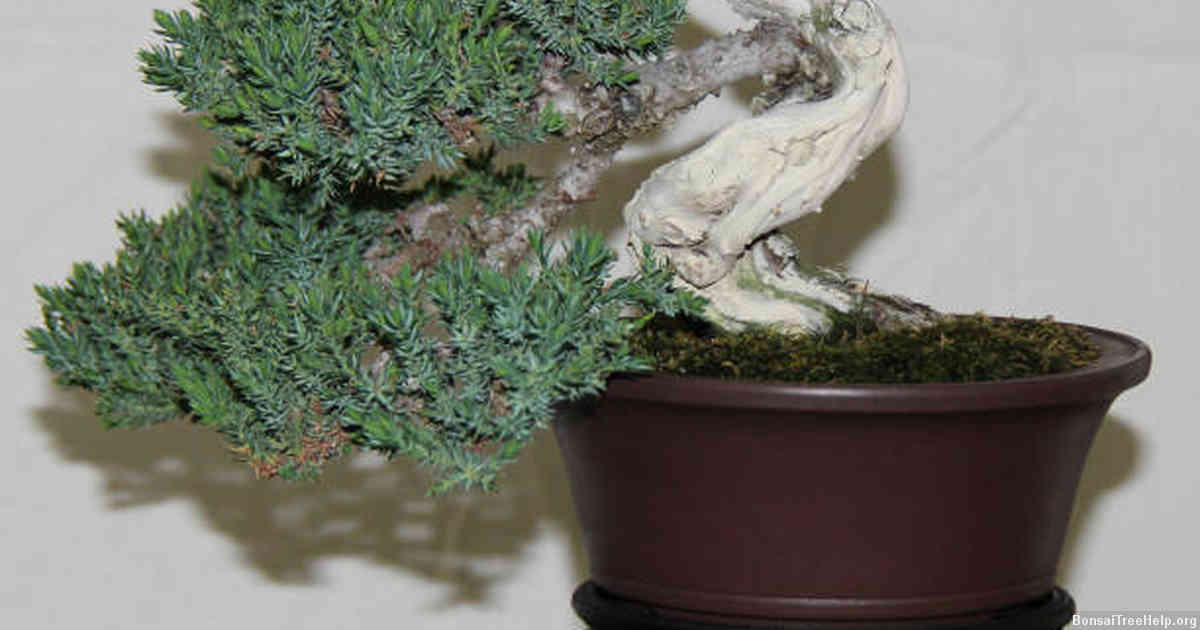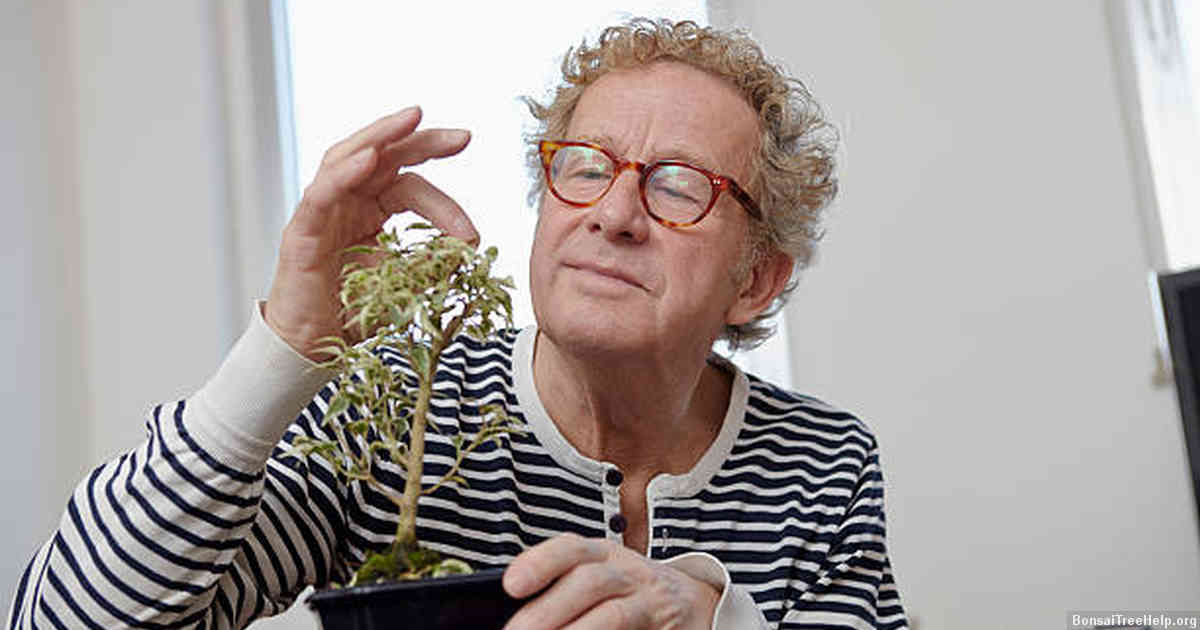
Mix equal parts of peat moss, loam and either perlite or sand to create muck for bonsai. Soak the mix in warm water until it is saturated. Squeeze out any excess water before using. The blend should have a moist but not wet consistency that can be easily scooped up with a hand trowel and shaped into your bonsai planter. Be sure to incorporate some organic matter like mulch or compost into the mix as these will provide additional nutrients for your bonsai tree’s growth.
Contents:
- Understanding the Ingredients for Bonsai Muck
- Steps to Prepare Bonsai Muck at Home
- Techniques for Mixing the Ingredients in Proportions
- Tips for Achieving the Desired Moisture Level in the Mixture
- Factors Affecting the Quality of Bonsai Muck and How to Overcome Them
- The Benefits of Bonsai Muck versus Other Growing Substrates
- Using Top Dressings and Fertilizers with Bonsai Muck
Understanding the Ingredients for Bonsai Muck

Making bonsai muck requires a blend of soil and organic material to provide the right balance of moisture, aeration, and nutrition for your plants. It is important to understand the different ingredients used in making muck as they each provide specific benefits and come with their own set of requirements when it comes to pH levels, air spaces, drainage capabilities and nutrient availability.
Perlite is one of the most common components found in bonsai soil mixes due to its light weight and ability to loosen clay soils. Perlite helps to improve drainage but does not retain water or nutrients so needs to be mixed with other materials such as vermiculite or peat moss which act like sponges by absorbing excess water from the substrate. Perlite can also help regulate air pockets within the mix allowing for adequate oxygenation for root health.
Organic content such as compost provides an excellent source of nutrients for bonsai plants while helping to maintain good soil structure. Compost contains beneficial bacteria that break down nutrients making them readily available for uptake by roots while providing food sources such as nitrogen, phosphorus and potassium necessary for healthy growth. To ensure optimal drainage it is important that compost is kept on the lighter side with no more than 30% being added into a muck mixture otherwise you may end up with a soggy wet mix that will encourage root rot.
Steps to Prepare Bonsai Muck at Home

Making bonsai muck for your beloved plants at home can be a highly satisfying and cost-effective solution. Although, the best bonsai muck is generally purchased from a professional supplier due to its high-grade quality, it can be prepared in your own backyard with ease. Here are some simple steps to get you started:
Begin by gathering the necessary materials; this includes compost, potting soil, sphagnum peat moss or coconut coir and some broken pieces of terra cotta pots. The ideal ratio for these components should ideally contain two parts of compost, one part potting soil and one part of either sphagnum peat moss or coconut coir. This recipe will yield optimal results if followed carefully.
Next step requires you to mix all the ingredients thoroughly in a wheelbarrow or container until an even consistency is reached. To ensure that there are no clumps present in the mixture, use a garden trowel or rake to move it around so everything is mixed evenly before finally emptying into a bucket for storage later on.
Add water to the mixture gradually until it becomes saturated but not too wet where excess runoff occurs when squeezing out small handfuls of the muck between fingers. If runoff does happen then drying off this batch may be required before using it within your bonsais’ root system as soggy roots may cause damage if exposed over long periods of time. Once ready simply apply liberally around your plant’s existing root system as well as any new growth when repotting ensuring nothing remains untouched that was previously added upon adding new substrate layers such as slow release fertilizer granules etcetera which need direct contact with a moist surface in order to work effectively overall.
Techniques for Mixing the Ingredients in Proportions

Mucking for bonsai is an essential part of keeping the plants healthy and thriving. The combination of soil, fertilizer, and organic matter needs to be balanced carefully in order to ensure that all nutrients are available to the roots in optimal quantities. Luckily, there are a few reliable techniques which can help any novice gardener get the most out of their muck mix.
The first step when it comes to mucking is establishing what kind of ingredients need to be included, such as soil, fertilizer, or mulch. Different types of bonsai will require different nutrient combinations and proportions depending on their size and age. Once these have been determined then it’s time to move onto mixing them together properly. One way to do this is by adding dry components gradually into a larger container before combining with water until a homogenous mixture is achieved. This technique allows for precise control over proportions and also helps reduce risk of over-watering as too much liquid can drown sensitive root systems.
Another approach is layering from bottom up; Start by placing soil at the base of your pot then slowly build layers with fertilizer mixed in between each one until you reach desired height. Make sure that everything has been thoroughly mixed though before applying the final layer otherwise risks damaging delicate root structures below surface level due to exposure from direct fertilizers contact. While time consuming methodically layering gives great precision control over both quantity and placement within potting medium itself creating environment most beneficial for plant’s development without having worry about drowning its roots or burning them away nutrients overloads.
Tips for Achieving the Desired Moisture Level in the Mixture

When it comes to bonsai, achieving the correct moisture level in your soil mixture is crucial. Too much water can quickly lead to root rot and bacterial growth, while too little will stunt the plant’s growth. To get it just right, here are a few handy tips:
The first step is to thoroughly mix together your ingredients for the desired ratio of soil and moisture-holding components – such as bark chips, sphagnum peat moss or compost. Once you have created your custom blend, give it time for all the materials to take on an even amount of moisture before planting. This allows you to more accurately measure water content after applying a bit of H2O and establishing a base humidity percentage.
To check if you’re at the sweet spot in terms of hydration levels, use a meter designed specifically for measuring muck consistency. These tools help ensure that you don’t end up under or over watering so that your beloved bonsai tree stays healthy with optimal hydration rates. Alternatively, you can also manually evaluate how dampened the roots appear by sticking your finger into the potting medium and seeing if they feel moist but not soggy – drying out as quickly as possible between waterings helps indicate its ideal state.
Even after finding its desired humidity rate, keep an eye on how much water evaporates over time – this way you will know when to water again without risking drowning or desiccating the delicate roots. With these steps followed accordingly, both novice growers and experts alike can provide their plants with exactly what they need from day one.
Factors Affecting the Quality of Bonsai Muck and How to Overcome Them

Creating a high-quality muck for bonsai is no easy feat. Variables such as soil composition, organic material content, and chemical balance all contribute to the overall quality of your bonsai’s growth environment. Those who are less experienced in bonsai cultivation may overlook one or more of these elements, resulting in muck that may be detrimental rather than beneficial.
When it comes to creating the perfect mix for a healthy bonsai, understanding what makes up good quality muck is essential. The first step is to make sure the soil you use contains components with balanced pH levels so it can provide optimal nutrient delivery. Organic materials should also be present – such as composted bark, shredded leaves and manure – adding additional nutrition and enabling your tree’s roots to branch out into unoccupied soil pockets.
Beyond just composing a well-balanced mixture of solid components, attention must also be paid to aeration of the muck during preparation and application stages; too dense an arrangement will deprive its occupant from access to necessary oxygen needed for strong growth patterns. To ensure adequate air flow, consider adding items like stones or pebbles; doing so will help introduce some space between compacted particles that would otherwise not permit open pathways within them.
The Benefits of Bonsai Muck versus Other Growing Substrates

When it comes to growing a bonsai tree, an often overlooked aspect of cultivation is the substrate. It plays a vital role in providing essential nutrients and support to the root system of the miniature trees. Many growers have found that creating their own bonsai muck provides multiple benefits compared to purchasing pre-made soil mixes or other substrates from gardening stores.
Bonsai muck is comprised of natural components such as composted manure, peat moss and clay materials that are rich in minerals, beneficial bacteria, oxygen and other elements needed for healthy plant growth. Using custom made muck allows you to tailor the mix so that it meets your specific needs for water retention and drainage requirements. This enables you to maintain better control over how wet or dry the soil is which can be especially advantageous if dealing with temperamental trees like Maple or Pine species.
Another advantage of homemade muck is its cost effectiveness compared to commercially produced soils where ongoing costs can add up quickly due to regular replacement needs of premade soils. Crafting one’s own bonsai muck requires minimal resources such as inexpensive organic materials all readily available at most nurseries, hardware stores or garden centers which significantly cuts down expenses when compared with buying prepared soil mixes on an ongoing basis.
Using Top Dressings and Fertilizers with Bonsai Muck

For bonsai trees, a layer of muck is essential for providing adequate nutrients and maintaining a healthy plant. To ensure that your tree receives the proper nutrition, it is important to combine top dressings with muck. Top dressings are dry materials like peat moss, pine bark mulch or cypress mulch that can be spread around the base of the tree to enrich the soil and provide necessary nutrients. As an additional benefit, these materials often help retain moisture in the soil as well.
When applying top dressings around your bonsai tree’s roots, make sure you mix them into the soil evenly for optimal nutrient distribution. If you’re having trouble getting an even blend without clumping or compaction, consider blending small amounts of material together in a bucket first before spreading it onto the ground around your tree. You should also be sure to use fertilizers tailored specifically to bonsai so that they contain all the elements necessary for strong growth and health such as nitrogen and potassium. This can be accomplished through either granular fertilizer applications or liquid fertilizer injections directly into the root system for more precise nutrient delivery.
Monitor both pH levels and watering habits when dealing with muck as too much water or not enough nutrients could cause damage to your bonsai over time if left unchecked. For best results on any style of bonsai you may have at home always consult professional advice prior to making changes in order to ensure success with your beloved plants.
Leave a Reply